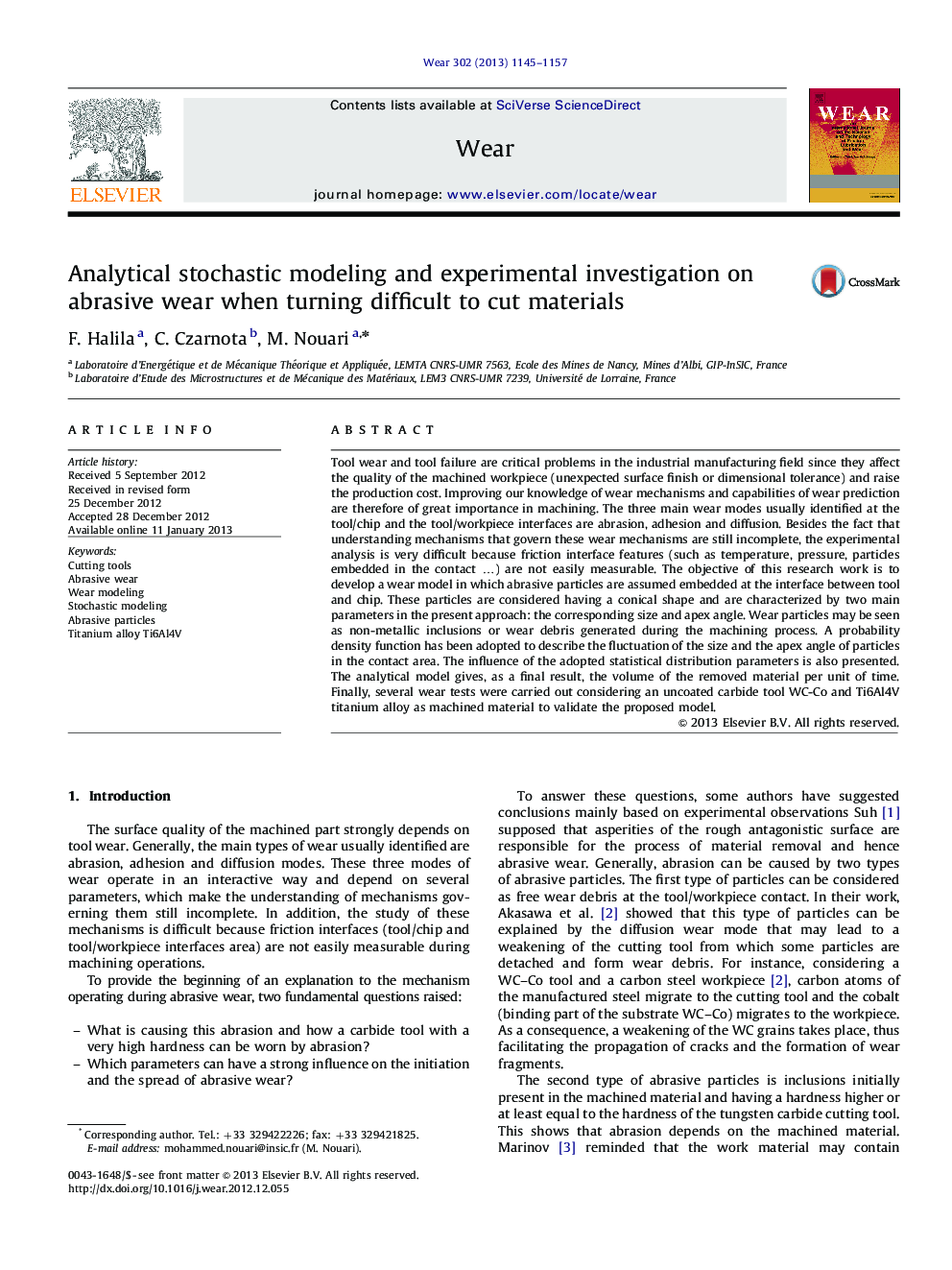| کد مقاله | کد نشریه | سال انتشار | مقاله انگلیسی | نسخه تمام متن |
|---|---|---|---|---|
| 617695 | 1455000 | 2013 | 13 صفحه PDF | دانلود رایگان |
عنوان انگلیسی مقاله ISI
Analytical stochastic modeling and experimental investigation on abrasive wear when turning difficult to cut materials
دانلود مقاله + سفارش ترجمه
دانلود مقاله ISI انگلیسی
رایگان برای ایرانیان
کلمات کلیدی
موضوعات مرتبط
مهندسی و علوم پایه
مهندسی شیمی
شیمی کلوئیدی و سطحی
پیش نمایش صفحه اول مقاله

چکیده انگلیسی
Tool wear and tool failure are critical problems in the industrial manufacturing field since they affect the quality of the machined workpiece (unexpected surface finish or dimensional tolerance) and raise the production cost. Improving our knowledge of wear mechanisms and capabilities of wear prediction are therefore of great importance in machining. The three main wear modes usually identified at the tool/chip and the tool/workpiece interfaces are abrasion, adhesion and diffusion. Besides the fact that understanding mechanisms that govern these wear mechanisms are still incomplete, the experimental analysis is very difficult because friction interface features (such as temperature, pressure, particles embedded in the contact â¦) are not easily measurable. The objective of this research work is to develop a wear model in which abrasive particles are assumed embedded at the interface between tool and chip. These particles are considered having a conical shape and are characterized by two main parameters in the present approach: the corresponding size and apex angle. Wear particles may be seen as non-metallic inclusions or wear debris generated during the machining process. A probability density function has been adopted to describe the fluctuation of the size and the apex angle of particles in the contact area. The influence of the adopted statistical distribution parameters is also presented. The analytical model gives, as a final result, the volume of the removed material per unit of time. Finally, several wear tests were carried out considering an uncoated carbide tool WC-Co and Ti6Al4V titanium alloy as machined material to validate the proposed model.
ناشر
Database: Elsevier - ScienceDirect (ساینس دایرکت)
Journal: Wear - Volume 302, Issues 1â2, AprilâMay 2013, Pages 1145-1157
Journal: Wear - Volume 302, Issues 1â2, AprilâMay 2013, Pages 1145-1157
نویسندگان
F. Halila, C. Czarnota, M. Nouari,